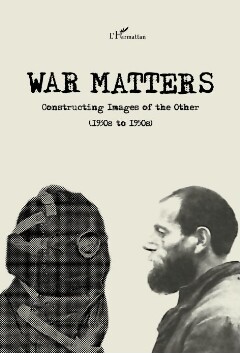Page 38 [38]
36
Christie Davies
those related to purely local and limited conflicts and not just ones constrained
or dictated by alien overlords. In the Anglo-Saxon images I have discussed there
is a marked shift between those generated in peacetime and those produced dur¬
ing a war, when hundreds of thousands of people are killed in battle. At a time of
violence it is hardly surprising that images become violent. Ihey do not cause the
conflicts (it would be naive to think so) but are a product of it, albeit used to sus¬
tain the combatants. Soon after the war ends, the more ‘violent’ images disappear.
The Nazi and Soviet systems were always psychologically in a state of war and their
economies geared to conflict rather than consumption and so they produced these
images all the time. Their images were a reflection of their willingness to murder
people by the millions for ideological reasons (Rummel 1994). These were quali¬
tatively different societies from the independent democracies and mild autocracies
that existed in Eastern and Central Europe in the 1920s and 1930s. However,
it has to be said that in a region where anti-Semitism was strong and pervasive,
the images of the Jewish Other from this time (Demski & Baraniecka-Olszewska
2010: 33, 148, 170-171, 191-195, 208-209, 378-389 and Demski et al 2013:
462-469, 476-483; see also Lustosa 2011) are far more negative than those of ter¬
ritorial neighbours who are a local but not an ideological Other.
Conclusion
‘The variety of images of the Other that exist forces us to suspect and deconstruct
the very concept of the Other, to realise in how many different ways a group set
apart from our own can be an Other. It may be a closely observed neighbour and
cousin who differs but little from us and can be seen as a foolish comical version
of ourselves, or it may be a distant Other whose ways are alien and inscrutable
and whose image exaggerates these very qualities. In addition, our sense of the
Other is, as Rokeach (1960) has shown, not limited to ethnic or national groups.
We all have a number of important identities linked to, say, a social class, a caste,
a religious denomination, a profession, a sexual orientation, and each of these car¬
ries with it its own antithesis and thus its own Other. For some individuals such
an identity and the loyalties that go with it are more important than their nation.
Upper-middle-class English communists tended to see their own bourgeoisie as
the Other and identified with their Soviet comrades, sometimes becoming traitors.
Historically aristocrats often felt they had more in common with foreign aristocrats
with whom they intermarried than with their own people and for them, the local
commoners were seen as the Other. Each of these Others may have allocated to it
a recognisable image used in cartoon or caricature: the top-hat of the banker, the
flat cap of the proletarian, the big teeth and lack of a chin that indicate the English
upper class, the high brow and often baldness of the absent-minded professor or
the boffin, the sly face of the lawyer in wig or high hat and gown, the handlebar
moustache of the RAF officer vs. the well-trimmed moustache of his army counter¬
part, the heavy beard of the Orthodox clergy vs. the beardless Western clergy, the

